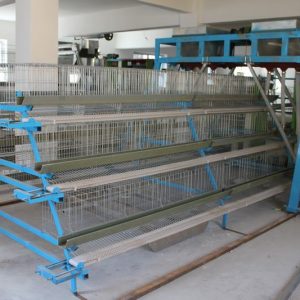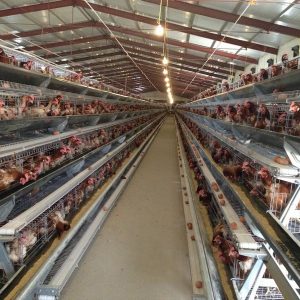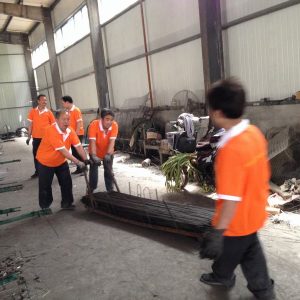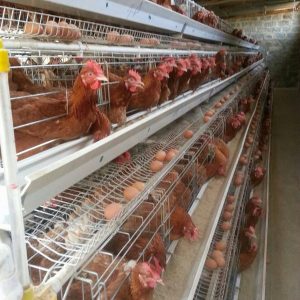
Several measures to improve broiler production
The ultimate goal of broiler production is to obtain high-quality food and maximum economic benefits. Therefore, it is necessary to master scientific broiler feeding management and disease prevention and control technology, and firmly grasp several key measures in broiler production to achieve the lowest Breeding costs get the best economic benefits.
1 High-quality chicken fry
requires the introduction of chicks from breeder farms that are standardized, good quality, high-reputation, and free of egg-transmitted diseases. Only healthy chicks can achieve high yields. The healthy young should be quick, dry and bright, with bright eyes and consistent development. In production practice, it often shows that the survival rate is high in 7-10 days. If death occurs in 7-10 days, the problem may come from the chicks themselves.
2 Full price feed
Feeding broilers must choose high-quality, low-cost, nutritionally balanced, and comprehensive compound feed to achieve the expected production performance. Therefore, in production practice, we must choose carefully. Suppliers with relatively stable feed quality and a good after-sales service system will help you achieve your predetermined goals.
3 Excellent environment
Environment includes two aspects: large environment and small environment. The overall environment refers to the location and layout of chicken farms. Chicken farms should be built far away from towns, factories and transportation routes. The terrain is required to be high, sunny, with sufficient sanitary water sources, convenient for power supply and transportation, and reasonable layout and construction in accordance with the requirements of broiler production. It is recommended not to engage in large-scale centralized breeding (based on the actual situation of domestic broiler production). It is advisable to implement large-scale diversion and establish a breeding community. The small environment refers to the living place of the broiler. The good environment of the small environment directly affects broiler production. Creating a comfortable and fine environment for broilers is a key link in improving broiler production and should be given priority attention.
4 Scientific feeding management
4.1 Sanitation and disinfection of chicken coops Set up a disinfection tank at the entrance of the chicken house. It is necessary to thoroughly disinfect the chicken coop and surrounding environment regularly, remove chicken manure or replace litter regularly, and insist on disinfection with chickens. Disinfection drugs can be peracetic acid (but not Long-term use of a single disinfectant), scaffolds or online chickens can be spread on the ground. Because peracetic acid can generate non-toxic acetic acid with ammonia gas, calcium hydrogen superphosphate can synthesize odorless solid phosphate with ammonia gas, thereby reducing the content of ammonia gas.
4.2 Feeding Density New chicken farms can be raised at 8-12 birds/m2, and older chicken farms should implement lower-density breeding. For chicken farms with poor heatstroke prevention and cooling conditions, the density of the flock should be reduced in summer, with 5-8 birds/m2 being appropriate.
4.3 Ventilation of the chicken house Ventilate the chicken house to avoid various diseases caused by the air pollution in the chicken house. For example, after 35 days (or even a little earlier), the snoring of chickens may not be an infectious disease, but related to ammonia. There are several solutions: one is to remove chicken manure frequently or to change the litter regularly to solve the sanitation problem; the second is to add zeolite to the feed to reduce the production of ammonia; the third is to open windows for ventilation when the weather is warm. But beware of thieves. Fourth, the chicken house must be equipped with fans or longitudinal ventilation.
5 Use drugs correctly
5.1 Medications on the way to prevent medication can be administered by mixing. The best way to treat drugs is to drink water, and some diseases of caged chickens can be treated by injection. For sick chickens, priority should be given to fresh drinking water, to ensure that the chickens can drink fresh and delicious drinking water, and they must be comfortable enough to drink water when they want. Chickens are most vulnerable to physical weakness and are willing to move around. However, when the chickens are in need of water the most, they are not easy to drink water, which will not make them recover. So doing everything possible to make the chicken drink fresh water will help the recovery.
5.2 Resolve the inconsistency between the drug sensitivity test and the clinical application effect. There are several reasons for this situation. One is that the bacteria in the drug test are no longer the bacteria of the diseased chicken; the second is that the drug sensitivity test paper of incompatible quality is used (national There are generally no counterfeit products in fixed-point production); third, sufficient amount of medicine can be used in actual production (because the actual medicine content of many veterinary medicines on the market is insufficient), it is best to use medicines in chicken farms for experiments.
5.3 Reduce the cost of medication, go deep into reality, carefully analyze, and treat the symptoms, and do everything possible to reduce the cost of medication.
5.4 Prevention of drug poisoning mainly includes the following situations: one is caused by over-dose medication (such as fustilin, sulfa drug poisoning, etc.); the other is caused by human medicine and veterinary use; the third is caused by repeated medication; the fourth is that the role of the drug is unknown (such as oral rehydration). Salt cannot be used for physiological thirst); Fifth, calculation errors and drug combination contraindications (for example, mycoplasma cannot be used in combination with salinomycin and monensin, and furazolidine cannot be used in combination with dinitrate).
6 Use vaccines correctly
6.1 Preventing interference between vaccines Interferon has the greatest interference effect in 2 to 3 days and disappears in 7 to 10 days. Therefore, immunization should be arranged according to the production schedule to avoid interference between vaccines and affect the immune effect. Thousands of Newcastle disease and infectious bronchitis cannot be immunized for a few days.
6.2 To prevent the death of live vaccines, the main attention should be paid to the transportation and storage of vaccines, to prevent deaths caused by disinfectants and deaths caused by the action of antibodies.
6.3 Choose the correct vaccination method Choose the appropriate vaccination method according to the immunization program: nose drops, eye drops, drinking or injection. Immunization is best performed before infectious bursal disease occurs. Drinking water epidemic should pay attention to the pH value of the water between 6.8-8, water control should be adequate, the water should be adequate, and skimmed milk powder should be added to the water, repeated twice for drinking, and use more.



